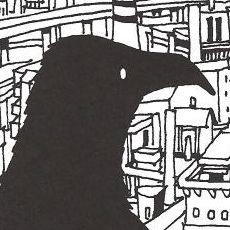Tag: Death Note
-
This anime fan forever looks back on 2007
/
Read More →: This anime fan forever looks back on 2007Jesus, it’s the end of another year. I’ve had fun in 2007; being a part of the anime blogging community and writing for you, dear reader. I’m not sure I’d last long if it wasn’t for your comments, but here we are, almost two years on and still talking, ranting, in love with anime. Back…
-
Lelouch and Light: the era of yuppies with broken dreams
/
Read More →: Lelouch and Light: the era of yuppies with broken dreamsArt imitating life, I’m sure you’ve heard that one before; the idea that the thoughts and fears of our generation are somehow reflected in the art (and therefore, entertainment) that we create. Life now, at least in developed countries like Japan, North America and the UK, is a lot calmer than it was 50 to…
-
The end of Death Note: a poison, creating wicked hearts
/
/ ReviewsRead More →: The end of Death Note: a poison, creating wicked heartsDeath Note is a “… poison, creating wicked hearts”, said the concerned prudes at Chinese schools after some ‘corrupted’ kids were discovered to be using their home-made murder pages to curse fellow students. This was back in 2005; the first time I’d heard of the now famous Death Note. Since then, I’ve always been interested…
-
Death Note – 15 – It's been all sorts of fun, L
/
/ ReviewsRead More →: Death Note – 15 – It's been all sorts of fun, LIt’s around about now that we realise Death Note is becoming more than a very good anime series. It’s becoming one of those “OMFG-WTF-CLIFFHANGER!?!” types. I can feel the hysteria surging within me. 15 episodes in and the twists and turns of the story are still as unpredictable as ever. Watching it makes me a…
-
MP3 Spotlight: Conquer the world with Death Note
Read More →: MP3 Spotlight: Conquer the world with Death NoteI’m sitting here feeling like I can take on the world, I’m listening to the Death Note soundtrack. This is the music that makes Light scribbling in his notebook"¦, hell, eating a packet of crisps, rock us like it’s an earth shattering moment. Understand then that this music is overblown and melodramatic, and love it…
-
Observations of Everything: Bye-Bye November
/
Read More →: Observations of Everything: Bye-Bye NovemberStill hopelessly hooked on… Black Lagoon (2nd Barrage) Episode 19 and counting The bog-standard Naruto fillers would be a lot more interesting if they managed to nab the creative bastards working on Black Lagoon. With that said the 2nd season has often flattered to deceive and appears to be more content to up the ante…
-
Death Note – 2 – Hiding behind a notebook
/
/ ReviewsRead More →: Death Note – 2 – Hiding behind a notebookI’m surprised by just how fast Light is losing grip on reality. In only this second episode he coldly considers killing his family if they were ever to piece together his part in the (now world famous) mass-murdering case, while later he shows no signs of regret upon murdering (using the Death Note, obviously) a…
-
Death Note – 1 – Wicked, manipulative and morally deranged
/
/ ReviewsRead More →: Death Note – 1 – Wicked, manipulative and morally derangedDeath Note is a Shounen Jump anime, but forget the generic conventions those two words invoke. Just like Bleach, this is a story that depicts the soul reaping world of “Shinigami” but where Bleach’s version of the afterlife is jammed with pouting pretty boys and nothing else, Death Note’s vision is dark, cold and lifeless.…
